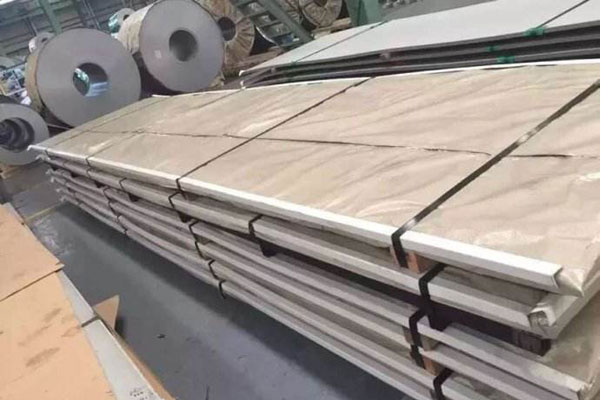A240 a203gr.a metal 15pc knife block
Other gases, corresponding to sulfur dioxide, hydrogen sulfide, carbon monoxide, chlorine, additionally assault stainless steel. Resistance to other gases is dependent on the kind of gasoline, the temperature, and the alloying content of the chrome steel. Stainless metal is now used as one of the supplies for tramlinks, together with aluminium alloys and carbon metal.
A240 a203gr.a steel 2020
China United Iron and steel Limited export ASTM A203/A203M Nickel-Alloy steel plate of A203GR.A,ASTM A203GR.A,A203GR.A Steel,A203GR.A HIC,A203GR.A NACE. If you have inquiry for that, please contact us by admin@corten-asteel.com
A240 a203gr.a steel third rack

The minimal 10.5% chromium in stainless steels offers resistance to roughly 700 °C (1,300 °F), while sixteen% chromium supplies resistance as much as roughly ASTM A203GR.A Nickel-Alloy steel plate 1,200 °C (2,200 °F). Type 304, the most common grade of chrome steel with 18% chromium, is proof against approximately 870 °C (1,600 °F).
Unlike carbon metal, stainless steels do not suffer uniform corrosion when uncovered to wet environments. Unprotected carbon metal rusts readily when exposed to a mixture of air and moisture. The ensuing iron oxide floor layer is porous and fragile. In addition, as iron oxide occupies a bigger volume than the unique steel, this layer expands and tends to flake and fall away, exposing the underlying metal to further assault.
Duplex grades tend to be most popular thanks to their corrosion resistance and higher strength, permitting a discount of weight and an extended life in maritime environments. Stainless steels have a protracted historical past of application involved with water as a result of their wonderful corrosion resistance. Applications include a variety of situations together with plumbing, potable water and wastewater therapy, desalination, and brine therapy. Types 304 and 316 stainless steels are commonplace materials of building in contact with water.
- Stainless steel is now used as one of many materials for tramlinks, along with aluminium alloys and carbon steel.
- The minimal 10.5% chromium in stainless steels offers resistance to roughly seven-hundred °C (1,300 °F), while sixteen% chromium provides resistance up to approximately 1,200 °C (2,200 °F).
- Type 304, the commonest grade of stainless-steel with 18% chromium, is proof against roughly 870 °C (1,600 °F).
- Other gases, corresponding to sulfur dioxide, hydrogen sulfide, carbon monoxide, chlorine, also attack stainless-steel.
- Duplex grades tend to be preferred thanks to their corrosion resistance and better power, allowing a discount of weight and a long life in maritime environments.
However, with increasing chloride contents, higher alloyed stainless steels similar to Type 2205 and super austenitic and super duplex stainless steels are used. The properties of duplex stainless steels are achieved with an total lower alloy content material than similar-performing tremendous-austenitic grades, making their use price-efficient for many functions.
What is steel plate?
Steel Plate, or structural steel is simply steel sheet material that can be customarily cut and welded to develop a more elaborate product. It is made by compressing multiple steel layers together into one; forming a plate of steel. Applications for Steel Plate are based acutely on the specifics of the project.
A240 a203gr.a steel plate 4×8 value
The pulp and paper trade was one of the first to extensively use duplex chrome steel. Today, the oil and gasoline industry is the biggest user and has pushed for extra corrosion resistant grades, resulting in the development of super duplex and hyper duplex grades.
Type 304 and Type 316 stainless steels are unaffected weak bases such as ammonium hydroxide, even in high concentrations and at high temperatures. The similar grades uncovered to stronger bases corresponding to sodium hydroxide at excessive concentrations and high temperatures will probably experience some etching and cracking. Increasing chromium and nickel contents present increased resistance.
